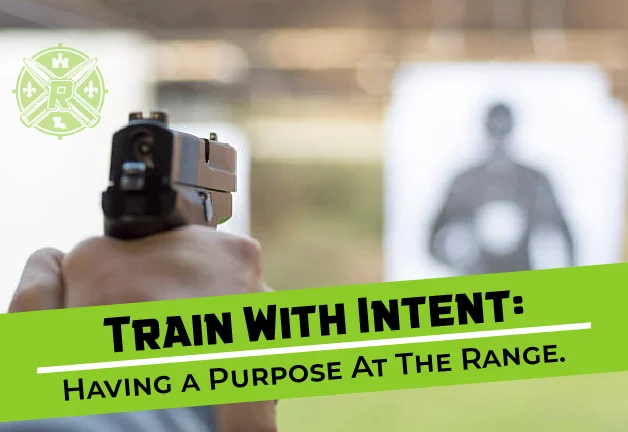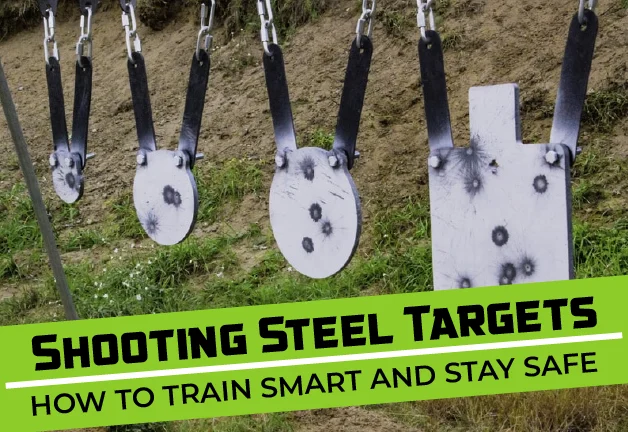Train with Intent: Why Having a Purpose at the Gun Range is Essential.
Walking into a gun range without a plan is like stepping into a gym without a workout routine, you might get some practice, but you won’t maximize your potential. Whether you’re training for self-defense, competition shooting, or simply honing your marksmanship, having a clear purpose at the gun range is the key to meaningful improvement.
Purpose-driven practice turns wasted rounds into measurable progress, making every shot count. It’s not just about sending lead downrange—it’s about refining your skills, decision-making, and reaction times to prepare for real-world situations. Every round you fire should serve a purpose, whether it’s mastering the fundamentals, improving your speed, or testing your ability to engage targets under pressure.
In this guide, we’ll break down why intentional training is key to becoming a better shooter, how to structure your range sessions for maximum impact, and the best ways to track your progress.
Why Purpose-Driven Training Matters
Every time you visit the range, you have an opportunity to build your skill set, reinforce good habits, and eliminate bad ones. Without a structured plan, or having a purpose at the gun range you may find yourself wasting ammo and developing ineffective shooting techniques that don’t translate to real-world applications.
A purpose-driven training session helps you:
- Develop Muscle Memory – Repetition under controlled conditions refines your draw, stance, and trigger control.
- Improve Accuracy & Precision – Focusing on specific drills helps you analyze and correct your shot placement.
- Boost Confidence & Readiness – Knowing you’re training with intent builds confidence in high-pressure situations.
- Maximize Range Time – A structured approach ensures you’re not just burning through ammo but actively improving.
- Refine Tactical Skills – Adding movement, reloads, and target transitions prepares you for practical scenarios.
Whether you’re training for home defense, competitive shooting, or tactical readiness, a plan ensures every round fired contributes to meaningful improvement.
Setting Goals for Every Range Session
To get the most out of your range time, establish a clear goal before loading up your mags. A shooter with a plan is more efficient, more focused, and ultimately more effective. Here are some structured training goals and corresponding drills to help you stay on track:
1. Accuracy & Precision Drills
Goal: Improve shot placement by focusing on groupings at various distances.
Drill: Shoot controlled, slow-fire groups at 7, 15, and 25 yards, adjusting stance and grip as needed.
Tip: Use a small target (such as a 2” dot) to emphasize precision.
2. Speed & Draw Efficiency
Goal: Reduce the time between holster draw and first shot while maintaining accuracy.
Drill: Start with slow, deliberate draws, then gradually increase speed while staying on target.
Tip: Use a shot timer to measure and improve your first-shot speed.
3. Transition & Target Acquisition
Goal: Improve rapid target transitions and follow-up shots.
Drill: Use multiple targets at varying distances and practice engaging them in sequence.
Tip: Focus on moving your eyes before moving your firearm for quicker transitions.
4. Defensive & Real-World Scenarios
Goal: Train as you fight—prepare for real-life encounters by integrating movement and decision-making.
Drill: Practice shooting from cover, engaging while moving, and utilizing reloads under stress.
Tip: Introduce verbal commands before shooting to reinforce threat assessment.
5. Competition Readiness
Goal: Sharpen speed and accuracy under pressure for competitive shooting events.
Drill: Use a shot timer to track and improve split times, reload efficiency, and rapid-fire accuracy.
Tip: Simulate competition stress by incorporating a timer or friendly challenges.
Avoiding “Spray & Pray” Shooting
One of the most common mistakes at the range is shooting without a plan—aka “mag dumping” for fun. While rapid-fire sessions can be entertaining, they don’t contribute much to skill development.
Instead, focus on controlled, intentional shooting that refines your abilities. Every round you fire should have a purpose, whether it’s fine-tuning your trigger pull, working on recoil management, or testing your ability to engage targets under stress.
Ways to Add Purpose to Casual Shooting Sessions:
- Set personal challenges, like reducing group size or beating your reload speed.
- Try “cold start” drills, testing accuracy and speed with your first shots of the day.
- Use a scored target system to track improvement over multiple sessions.
- Introduce low-light or no-light shooting to enhance defensive skills.
There’s nothing wrong with having fun at the range, but adding structure ensures that even casual shooting sessions contribute to your growth as a shooter.
Tracking Progress & Making Adjustments
The only way to improve is to measure your results. If you’re just shooting without tracking, you’re missing valuable data that could help you refine your technique and identify weaknesses.
Here’s how to effectively track and refine your shooting skills:
- Keep a Range Journal – Record your drills, shot placement, and areas needing improvement.
- Use Shot Timers – Monitor draw speed, split times, and reload efficiency.
- Take Photos of Targets – Compare progress over time and adjust training accordingly.
- Film Yourself Shooting – Analyze stance, grip, and movement for corrections.
- Set Benchmarks – Challenge yourself with specific accuracy, speed, and transition goals.
Bonus Tip:
Training with a shooting partner or instructor can provide valuable feedback that you might miss on your own. If possible, have someone analyze your shooting technique or record your sessions for review.
Parting Shots
Every trip to the range should be intentional and structured. Whether you’re focused on self-defense, competition, or just sharpening your skills, training and having a purpose at the gun range ensures consistent improvement and better performance under pressure.
Instead of wasting ammo on unfocused shooting, set goals, track progress, and push yourself to train smarter, not just harder.
So next time you hit the range, ask yourself—what’s your mission today?
Training Tips from Jerry Miculek
Grip Strength: The #1 Underrated Weapon for Faster Follow-Up Shots




